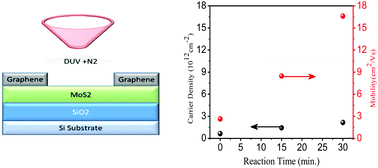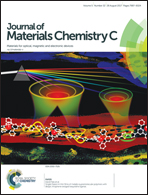MoS2 field-effect transistor with graphene contacts
Abstract
Tailoring the electronic properties of molybdenum disulfide (MoS2) is essential to obtain the best performance of its electronic and optoelectronic devices. Here, we report a simple methodology to improve the performance of bi-layer (BL) MoS2 field-effect transistors (FETs) by a combination of nitrogen (N2) gas and deep-ultraviolet (DUV) light treatment. Threshold voltages of BL MoS2 FETs shifted towards a negative gate voltage after treatment with N2 gas in the presence of DUV light. The charge-carrier mobility of BL MoS2 was improved significantly after exposure to N2 gas under DUV light irradiation. The carrier density of BL MoS2 was enhanced after treatment with N2 gas in the presence of DUV light. We believe that our work may also help improve the performance of other two-dimensional nanomaterials.



 Please wait while we load your content...
Please wait while we load your content...